什么是泰达币付款?
什么是USDT,为什么要用它来支付?
USDT,也称为泰达币,是一种与美元(USD)挂钩的数字货币。这种挂钩意味着可以将1 USDT兑换成这种数字货币背后的公司Tether Limited的1美元。
USDT属于一种被称为 “稳定币” 的数字货币,因为与其他快速波动的加密货币不同,它们与标的资产的价值挂钩并保持稳定的价值。
稳定性使USDT成为在区块链上发送和接收付款的理想选择。USDT不会波动,因此人们有足够的信心将其用于日常交易,因为他们知道今天的1 USDT在不久的将来价值将相同,这与其他可能大幅降低价值的货币不同。
存在许多稳定币,但USDT是全球使用最广泛的稳定币。 超过 160 亿美元 价值的泰达币目前正在流通,每天处理超过1000亿美元的泰达币交易。
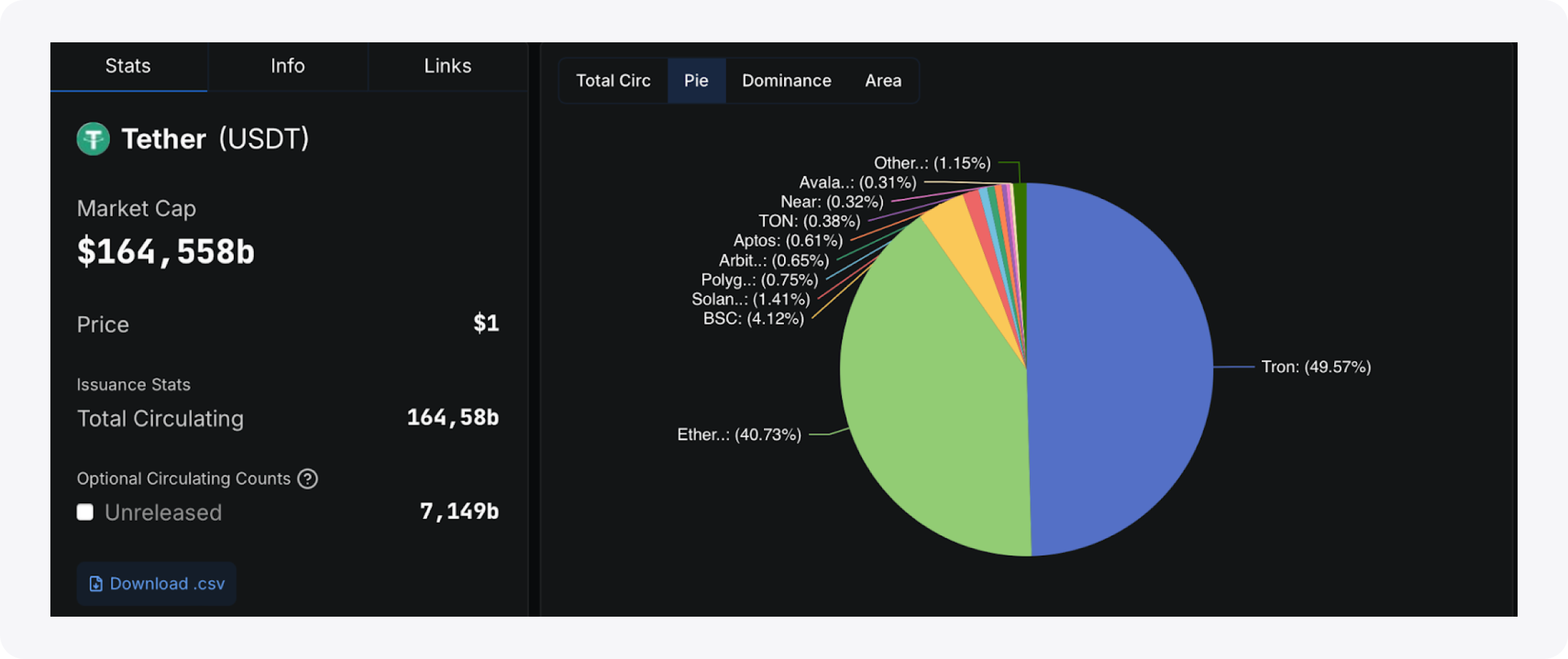
使用 USDT 进行付款的好处
在以高波动性闻名的加密货币行业中,稳定性是使用USDT进行支付的主要好处。今天价值100美元的USDT在未来将保持100美元的价值,因此许多人有信心与之进行交易。自2014年问世以来,这种稳定币一直没有失去与美元的挂钩。与比特币、以太币或许多其他加密货币不同,您不必担心使用USDT会降低价值。
另一个好处是,它可以加快国际交易,因为USDT付款可以在几分钟内处理,这与法定货币转账不同,银行可能需要几天才能处理。同样,您可以在全球范围内以低廉的费用发送和接收USDT,尤其是在处理低于100美元的金额时。相比之下,通过银行处理低于100美元的国外交易可能会产生10至30美元的费用,因此不值得。
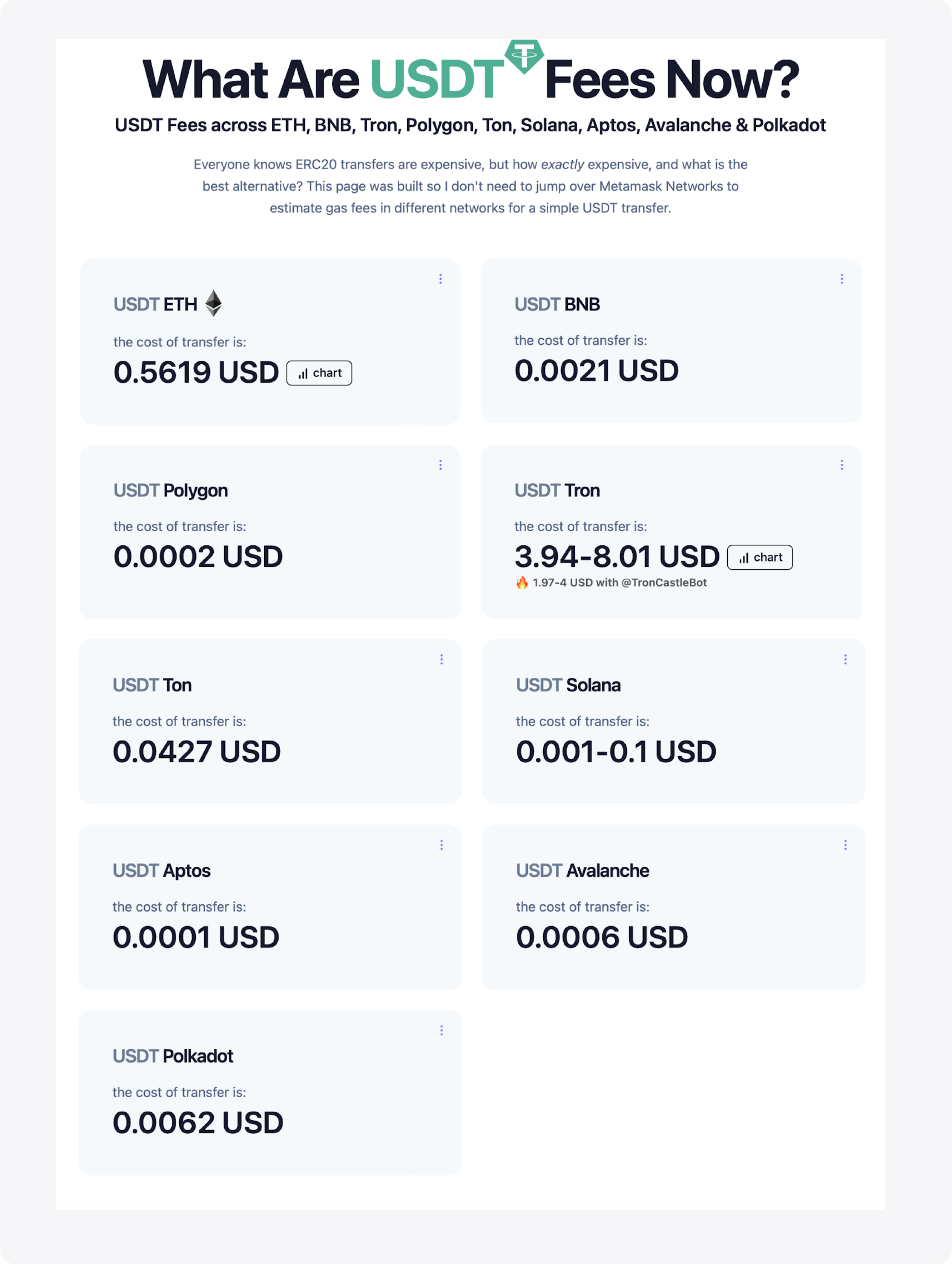
USDT 在实体经济中的运作方式
我们已经解释说,USDT之所以稳定,是因为它与美元挂钩。但是,谁能维持这种挂钩,又是什么保证了其长期稳定性?让我们来探讨一下它是如何工作的。
USDT背后的公司是Tether Limited,这是加密货币行业最大的公司之一。Tether 创建了 USDT 单位,以等值的美元出售。泰达币有一项协议,允许泰达币持有者将其代币兑换成泰达币储备中的美元。
Tether将其收到的美元投资于现实世界的资产,例如政府债券,并保留一小部分现金以支付USDT持有者的短期赎回。该公司通过赎回费和投资资产的应计利息来赚钱。
根据Tether Limited的最新报告,它持有 超过 120 亿美元 美国国债和其他易于出售的资产(例如黄金)的价值,以及大量的现金持有量。这个想法是,Tether始终拥有基础资产,可以将客户的USDT代币兑换成真实的美元,从而使客户有信心与他们进行交易。
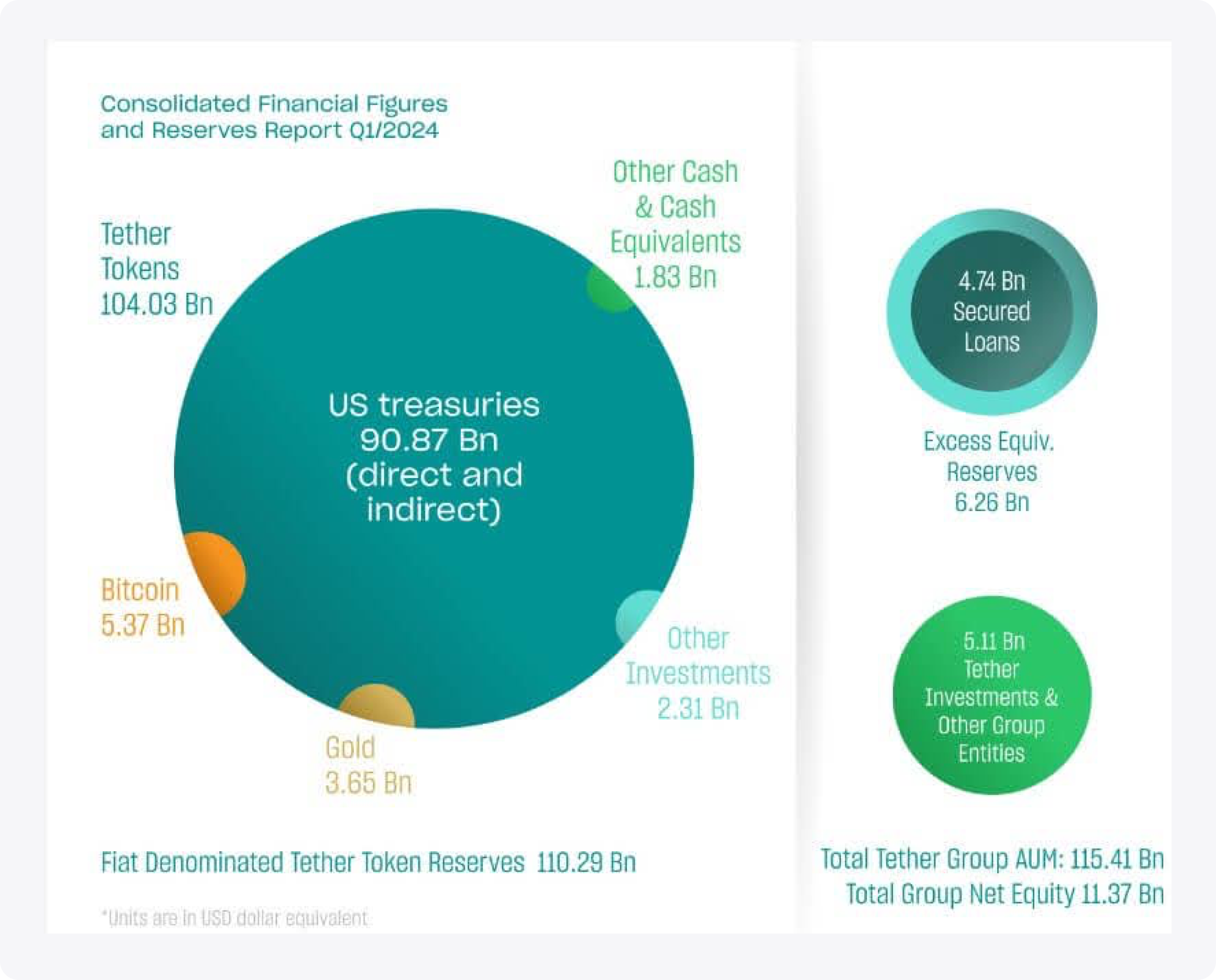
每天有超过1000亿美元的泰达币易手。它是交易、贷款和其他商业交易的首选货币,人们选择接受稳定币作为付款。USDT是使用美元的可行替代方案,在某些情况下可能很难获得和处理。
如何开始使用 USDT 进行付款
如果你想知道如何使用USDT支付商品和服务,那么这个过程并不遥远。第一步是创建一个用于存放代币的加密货币钱包。然后,您可以在公开市场上购买USDT代币并将其存入您的钱包。使用钱包中的USDT代币,您可以在支持USDT付款方式的不同平台上进行交易。
创建和设置加密钱包
您可以通过几个步骤创建加密货币钱包。许多钱包提供商,包括 B2binPay,允许您注册并创建安全的钱包,用于在各种区块链上存储、接收和发送泰达币代币。您可以选择合适的钱包提供商并按照他们的指示进行操作。
在哪里以及如何购买泰达币
创建钱包后,您可以在加密货币交易所购买泰达币,例如 coinbase 和 币安。您可以使用法定货币购买泰达币,也可以将其他加密货币(例如比特币和以太坊)兑换成等值的泰达币。代币将直接存入您的钱包,您可以开始使用USDT付款方式。
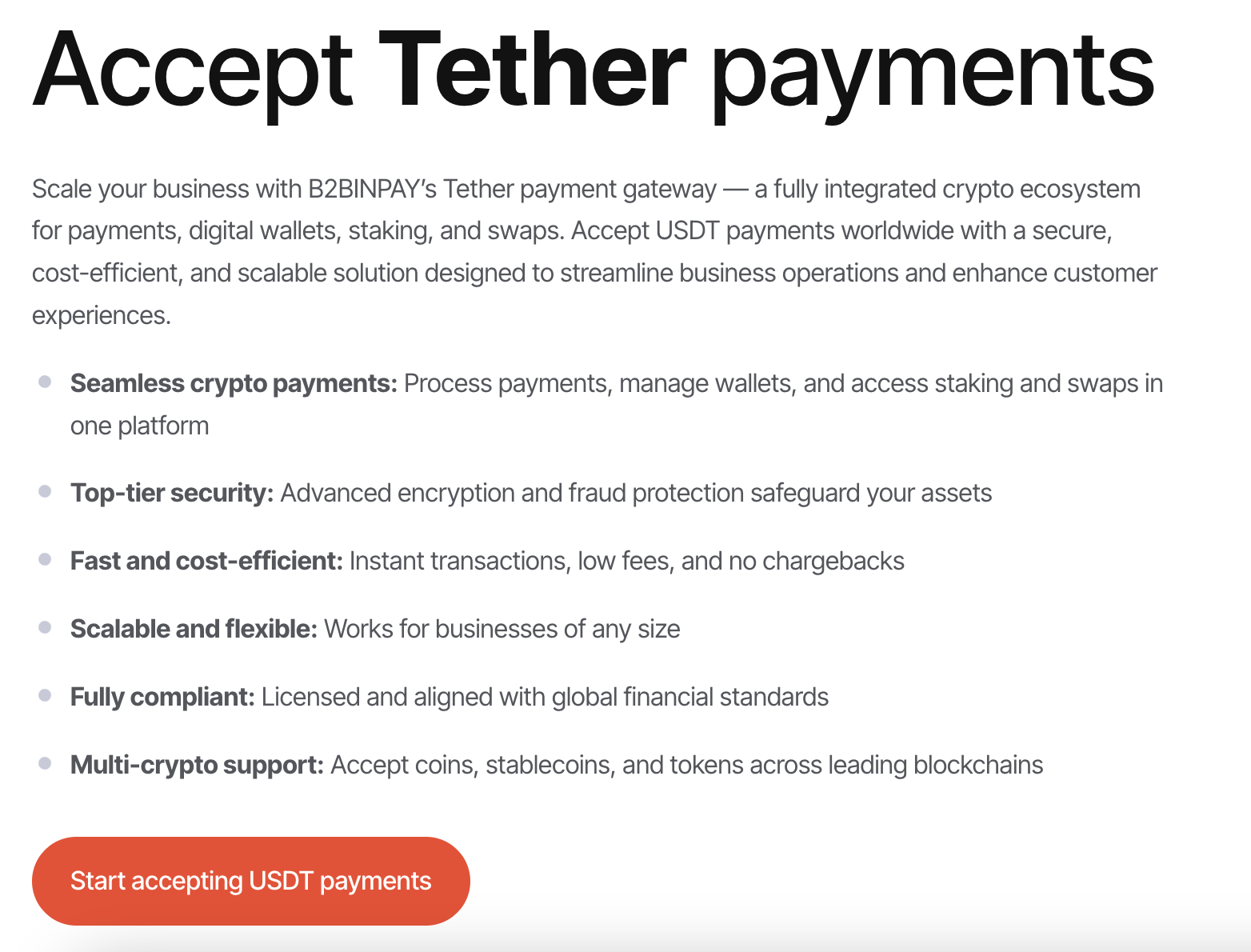
如何选择可靠的交易所来购买泰达币
选择交易所使用泰达币付款方式时要考虑的主要因素包括:
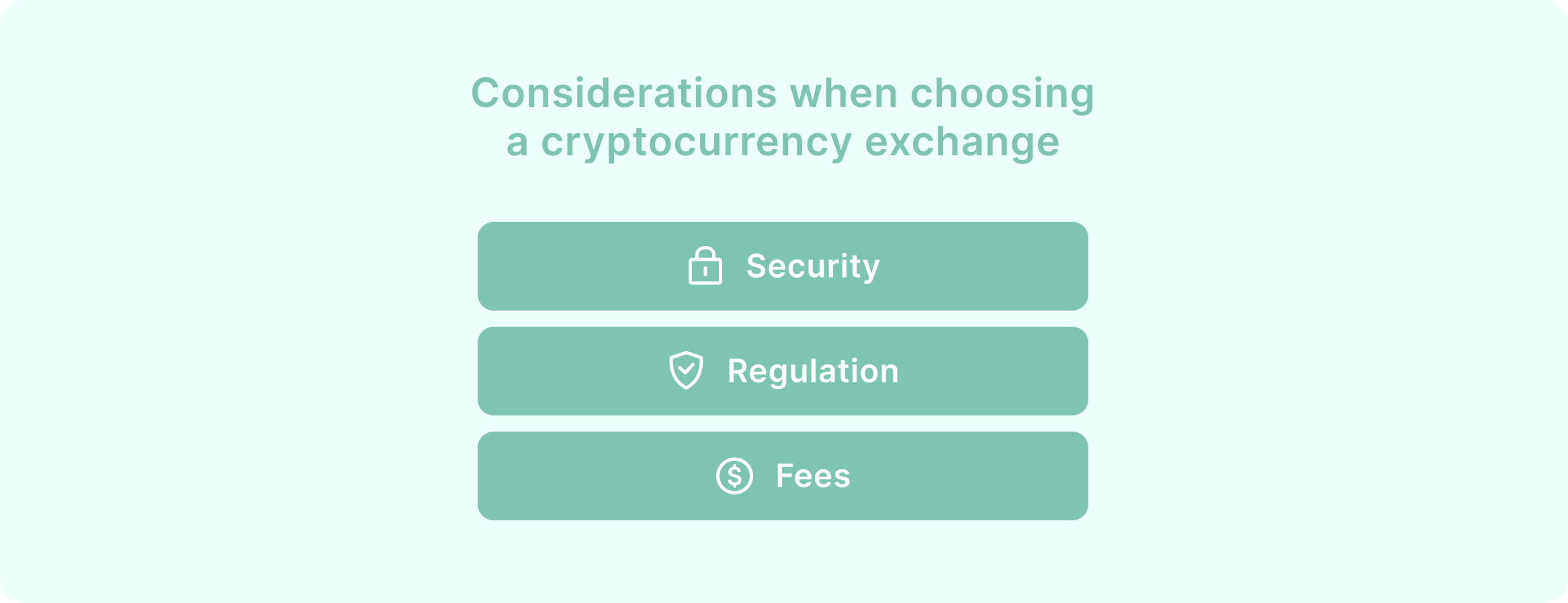
- 安全。您需要一个具有强大安全功能的交易所,包括高级加密、两因素身份验证、多重签名钱包和定期审计。安全是重中之重,因为加密交易所经常成为试图窃取资金的恶意行为者的目标。
- 规则。选择符合您所在司法管辖区数字货币法律的加密货币交易所。合规交易所可确保您不会受到法律审查,并保护您免受与恶意方进行交易的侵害。
- 费用。以加密货币交易所收取的交易费用为例。你可以比较不同的平台,然后选择一个你满意的收费平台。
<H2>使用 USDT 付款的方式
您可以使用USDT来支付在线服务,例如网站订阅、虚拟主机服务和商业应用程序。您还可以使用USDT在零售商店购买商品,尽管是间接的,但借记卡可将您的USDT转换为零售商的法定货币。
<H3>在线支付商品和服务
一些平台允许客户直接使用USDT支付服务费用。例如,许多在线游戏允许您使用这种稳定币支付虚拟商品。现在,一些自由职业者平台允许企业使用USDT代币直接向员工付款。
使用Tether支付商品和服务是一个简单的过程。卖家将发出付款请求,您只需从您的加密钱包中授权付款即可。付款将在几分钟甚至几秒钟内得到确认。
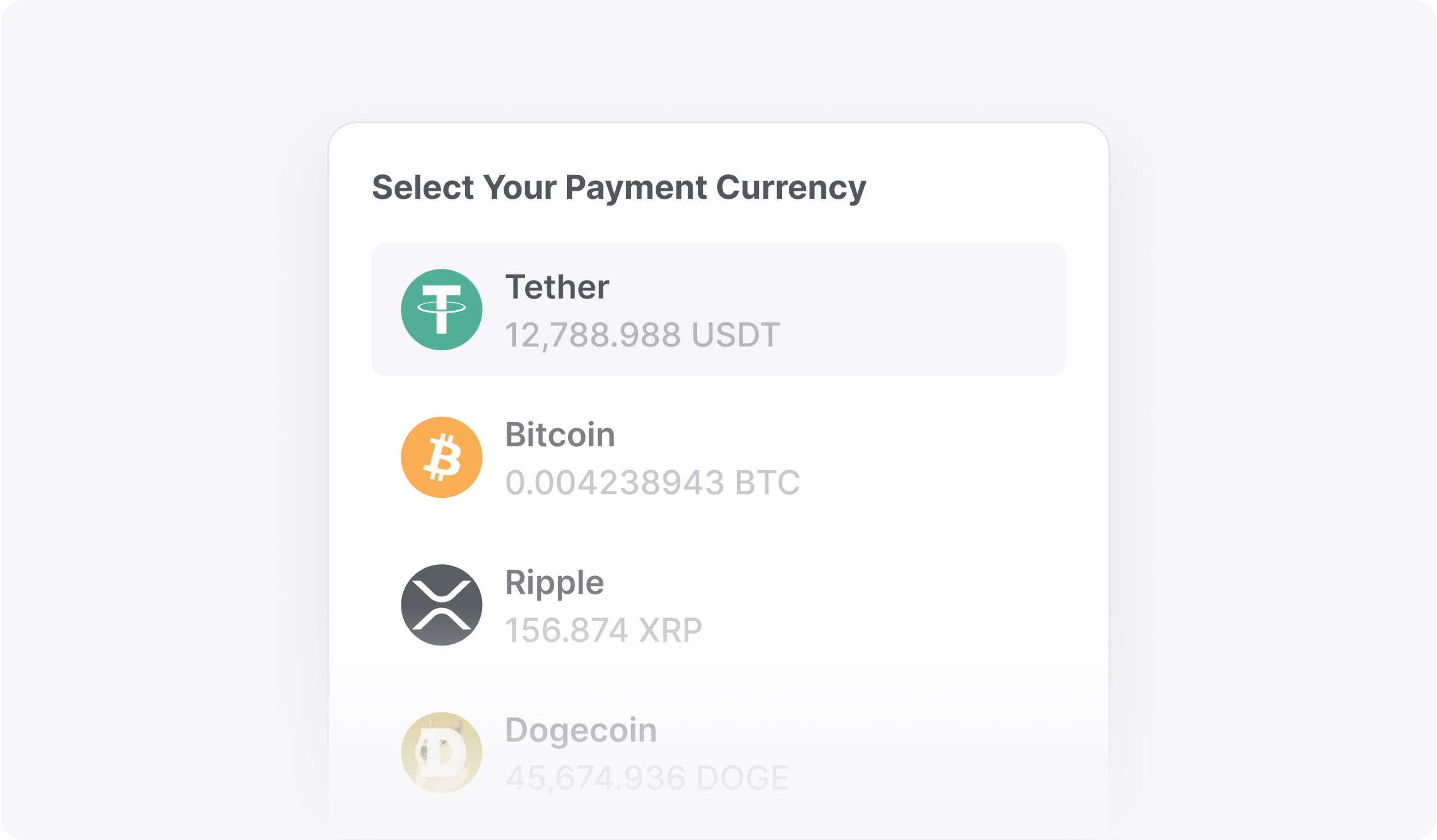
<H3>在零售商店付款
您可以使用USDT在实体零售商店购买商品。一些商店直接接受USDT,但大多数不接受。相反,您可以使用加密借记卡自动将钱包中的USDT转换为零售商的法定货币。
假设您选择一件价格为100美元的商品并刷卡您的加密借记卡或信用卡,等值的100 USDT代币将从您的钱包中扣除,而零售商将获得100美元的法定货币。
<H3>使用加密借记卡
许多受欢迎的加密货币交易所都提供借记卡,可以成功为客户支付USDT。这张借记卡将链接到您在加密货币交易所的钱包。您可以使用该卡来支付以法定货币定价的日常用品,等值的USDT代币将从您的钱包中扣除。

<H4>热门卡牌概述
Bybit、Coinbase和币安就是向客户提供借记卡的加密货币交易所的例子。他们收取不同的发行费和法定货币转换费,并提供不同的现金返还百分比。让我们在下面探讨这些细节。
<H3>使用 USDT 进行国际转账
USDT没有跨境发送法定货币时会遇到的典型限制。与电汇不同,跨境USDT交易可以在几分钟内处理,电汇可能需要几天才能存入收款人的银行账户。
另一个关键优势是能够以最低的费用转移USDT。根据您的加密货币平台,交易费用可能低至0.1%。同时,银行收取10至50美元的固定费用来处理国际电汇。USDT付款更实惠,尤其是在处理少量资金时。
<H2>哪里接受泰达币作为付款?
不同的在线和实体商店接受USDT作为付款。在这些地点,您可以直接使用USDT付款,也可以使用将USDT转换为法定货币的借记卡。
<H3>在线商店和平台
一些电子商务网站直接接受USDT作为付款。例子包括 Newegg,它销售电子产品,以及 积压,出售家居装饰品和家具。许多其他小型商店也接受来自全球客户的USDT。
<H3>实体零售地点
实体店对USDT的接受程度仍然有限,部分原因是监管问题以及传统银行不愿代表零售商处理USDT付款。但是,解决方法是使用加密借记卡,将钱包中的泰达币无缝转换为零售商的法定货币。
<H3>旅行预订服务
现在,少数旅行预订平台接受客户的USDT。 特拉瓦拉 是一个值得注意的例子,一些较小的竞争对手也是如此。如果旅行预订提供商不直接接受泰达币,您可以使用加密借记卡付款,钱包中的泰达币将转换为法定货币。

<H2>基本安全措施
使用USDT进行交易时,安全性至关重要。您的加密货币交易所将具有保护您的账户的功能,但您还需要通过遵守以下原则来发挥自己的作用:
<H3>切勿分享您的个人信息
不要分享有关您的钱包的敏感信息,尤其是您的私钥和恢复短语。任何拥有这些信息的人都可以使用它来访问您的帐户,因此应谨慎地保护他们。标准做法是将它们离线存储,而不是存储在联网的设备上。例如,您可以将它们保存在安全的实体保管箱或未联网的冷钱包中。
<H3>启用双因素身份验证
双因素身份验证 (2FA) 为您的加密钱包账户增加了一层额外的安全保障。启用它后,拥有正确的用户名和密码不足以访问您的帐户。相反,您需要向您的手机号码、电子邮件地址发送一个唯一的 PIN,或由身份验证器应用程序生成的唯一 PIN。
每次登录尝试都会重新生成的 PIN 提供了额外的安全层。加密交易所和平台提供2FA作为标准功能。
<H3>备份你的钱包
钱包应用程序会为每个钱包发布一个恢复短语,如果您丢失了钱包的凭证,该短语可用于恢复钱包。备份钱包意味着将恢复短语的副本存储在安全的离线位置。例如,你可以把这个短语写在纸上,然后把它存放在家里的隐蔽位置。
恢复短语又长又乱七八糟,因此不容易随手记住。将它们存储在安全的地方可确保即使丢失私钥也能找回钱包。
<H2>如何在您的网站上接受 USDT 付款
如果你经营在线业务,你可以 接受 USDT 付款 来自客户。您可以通过集成支付网关来做到这一点,该网关收集USDT代币并将其存入您的安全钱包。存在许多支付网关,您可以选择适合自己需求的支付网关。
<H2>选择支付网关
选择接受 Tether 付款的网关时的主要考虑因素包括:
- 费用。不同的支付网关有不同的手续费,具体取决于USDT的交易量。每笔交易的0.1%至2%是标准的,因此请选择一个收费标准的平台。
- 易于集成。您需要一个可以轻松与在线商店集成的泰达支付网关。最好的网关有一个简单的集成过程,你可以自己做,也可以外包给技术专家。
- 安全。您的支付网关应具有高级安全功能,以保护您的资金以供长期存储或立即提款。
<H4>热门解决方案:Bitpay、CryptoCloud、CoinsPaid
Bitpay、CryptoCloud、CoinsPaid和B2BinPay是您可以集成到网站以启用泰达币支付选项的重要网关。让我们来探索它们的核心功能。
将@@ <H3>支付系统集成到您的业务中
将支付系统集成到您的网站或应用程序中可能会涉及技术问题,但并不太复杂。您的支付网关将向您提供 API 密钥,该密钥将在您的电子商务网站的后端输入。流行的电子商务平台,例如 Shopif 使此 API 无缝集成,使您能够快速开始接受 USDT 付款。
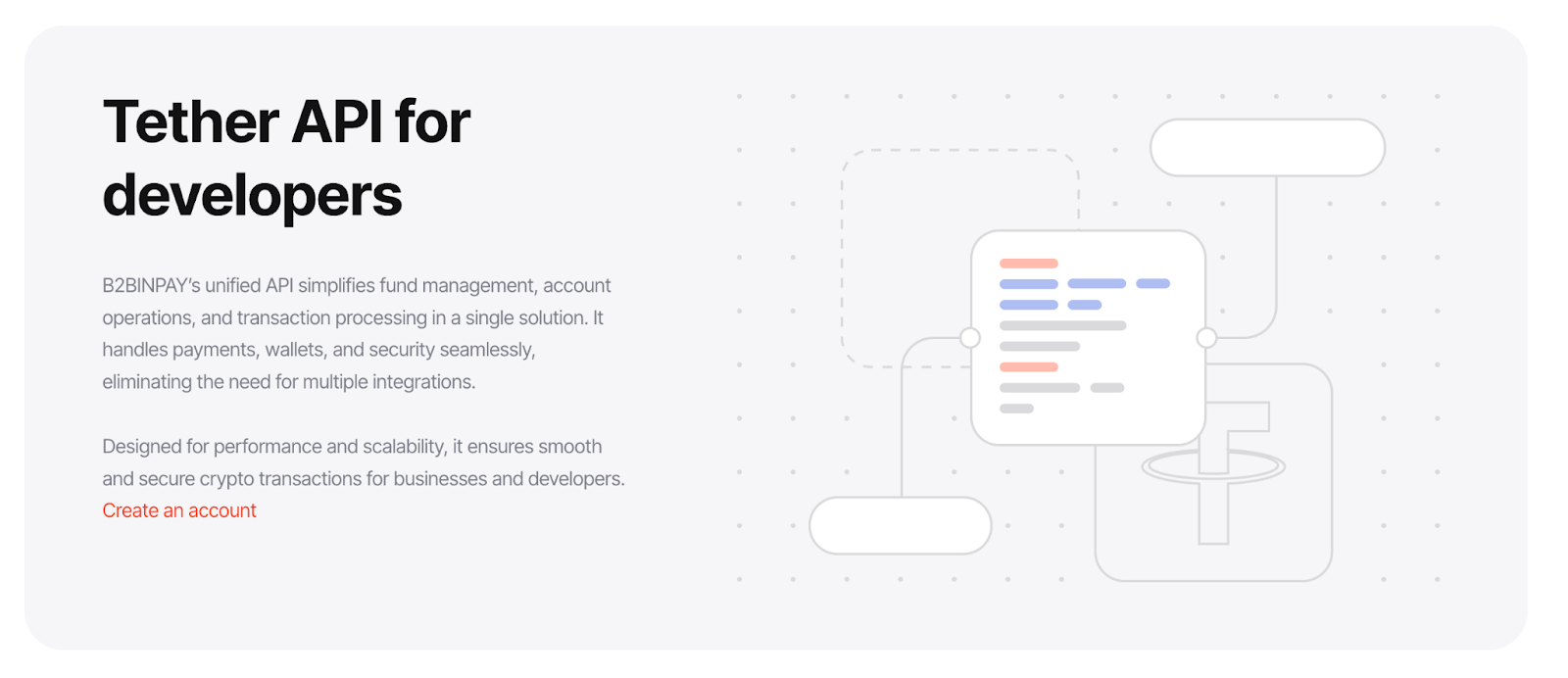
<H3>创建加密发票和账单
将支付网关集成到您的网站后,客户可以单击付款按钮启动付款流程并向您发送所需的USDT代币。或者,您可以创建发票并将其发送到客户的电子邮件地址,允许客户点击按钮将请求的金额转入您的USDT钱包。支付网关使开具发票变得容易;每张发票都将分配一个唯一的链接,您可以将其发送给客户。
<H2>使用泰达币(USDT)和加密货币进行支付的未来
USDT的采用没有放缓的迹象。目前有超过1600亿美元的USDT在流通,相比之下 大约 90 亿美元 2024年初为660亿美元,2023年初为660亿美元。实际上,USDT的流通量在过去两年中增长了近两倍,在过去的一年中几乎翻了一番。
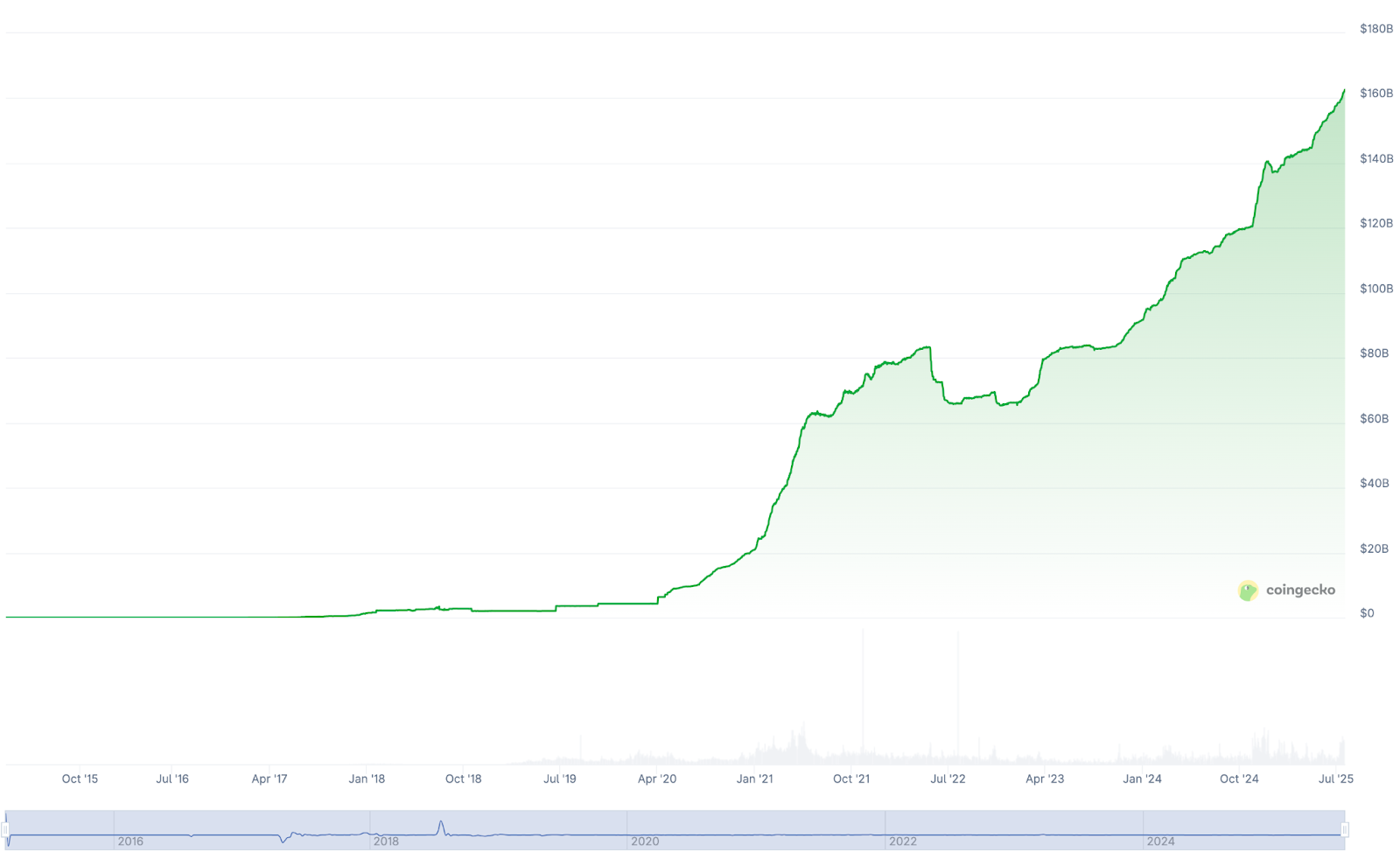
该图表说明了自2014年创立以来的USDT流通量的快速增长。
来源: CoinGecko
USDT并不是唯一蓬勃发展的稳定币。USDC和币安美元(BUSD)等其他同行在加密市场上也越来越受欢迎。不断增长的市值表明,随着时间的推移,稳定币支付将变得正常化。
尽管市值已经很大,但USDT及其同行进入主流金融领域的潜力要大得多。趋势是,越来越多的企业开始接受泰达币作为一种支付方式,因此预计稳定币的使用将变得越来越方便。
<H3>加密支付系统的发展
加密支付系统正在迅速发展并进入主流。与传统的法定支付相比,它们的自然优势包括快速付款,费用要低得多。
加密支付网关处于这种快速转变的最前沿,使企业能够将加密支付无缝集成到其网站和商店中。只需进行一些调整,您就可以整合 B2binPay 进入您的在线平台并立即开始接受 USDT 付款。
B2binPay支持以具有竞争力的费率进行快速付款。我们的平台支持USDT支付以及许多其他代币,包括比特币、以太坊、莱特币和狗狗币。您可以将收到的代币长期存储在您的 B2binPay 钱包中,也可以将其提取到法定银行账户。选择 B2BinPay 作为您的加密支付网关,享受无缝交易。
<H3>USDT在不同国家的监管和法律地位
监管是广泛采用USDT和其他稳定币的重大障碍。如果对稳定币的使用没有明确的法规,传统企业和银行对接受稳定币持怀疑态度。好消息是,这个问题正在逐步得到解决。
负责监督全球最大金融市场的美国政府最近颁布了具有里程碑意义的法律 天才法案,概述了对稳定币的明确监管,包括100%的流动资产储备支持,以及避免误导性的营销行为。
在美国运营的稳定币必须持有美元和国债的基础储备。随着美国政府的这项精确法规的执行,银行和企业将更有信心将稳定币整合到其金融业务中。
随着USDT在稳定币市场占据主导地位,它有望顺应GENIUS法案刺激的日益普及的浪潮。现在是企业接受USDT支付商品和服务的好时机。
<H2>常见问题
<H3>USDT与USDC或BUSD等其他稳定币有何不同?
Tether Limited发行泰达币,而USDC由加密巨头Circle和Coinbase的合资企业发行,而BUSD由全球最大的加密货币交易所币安运营。它们都是与美元挂钩的稳定币。这种稳定性使USDT成为许多企业的可行支付选择。
<H3>我可以在不注册加密货币交易所的情况下使用USDT吗?
是的,您无需在加密货币交易所正式注册即可使用USDT。例如,一些银行应用程序允许您将法定货币余额转换为泰达币,然后直接存入您的钱包。但是,加密货币交易所是购买泰达币并将代币用于日常交易的最便捷方式。
<H3>转账泰达币时会产生哪些费用?
将USDT转移到另一个钱包时,您需要向托管USDT代币的区块链支付交易费。泰达币支付方式中最受欢迎的区块链是以太坊(ERC-20)、Tron(TRC-20)和BNB智能链(BEP-20),费用因网络拥塞而异。
如果您使用加密货币交易所转移代币,则该交易所通常还会收取0.1%至0.5%的交易费。
<H3>如何将泰达币兑换成法定货币?
您可以通过交易所将泰达币代币转换为法定货币。这就像购买法定货币并使用USDT付款一样。将代币转换为法定货币后,可以快速将其提取到您的银行账户。
<H3>我可以取消泰达币付款或获得退款吗?
一旦在区块链上得到确认,加密交易是不可逆的。因此,在发起交易之前,请务必仔细检查,因为退款仅取决于收款人的商誉。
<H3>如何选择安全的加密货币钱包来存储泰达币?
选择钱包提供商时,优先考虑安全功能,例如双因素身份验证和高级加密。B2binPay提供安全的钱包解决方案,可以长期保护您的泰达币。
<H3>USDT有最低转账金额吗?
严格来说,您可以在区块链上转移的USDT代币没有最低金额。但是,一些加密钱包应用程序和交易所规定的最低金额为1美元或2美元,以避免处理微不足道的USDT付款的麻烦。
<H3>USDT网络中的交易有多快?
USDT交易通常在5分钟内结算,在向外国收款人转移资金时,这比传统银行快得多。但是,某些交易可能需要长达20分钟或更长时间,具体取决于网络拥堵和加密货币交易所的基础设施。
<H3>使用泰达币付款时我需要纳税吗?
如果您使用泰达币付款方式,即接收泰达币作为所提供商品和服务的付款,则许多司法管辖区将其视为应纳税所得额。您将根据以当地货币计算的 USDT 的价值支付适用的税率。
例如,如果您居住在美国,则需要按等值的美元缴税,这很容易计算,因为 USDT 与美元挂钩 1:1。
<H3>如何在区块链上查看USDT交易的状态?
您可以在您的加密货币交易所或钱包应用程序中查看唯一的交易ID。然后,你可以在区块链数据库中搜索这个交易ID,比如 以太网扫描 和 TronScan。扫描结果将显示交易是待处理还是已结算。
<H3>哪些商店已经接受泰达币作为付款?
一些大型在线商店,例如Newegg和Overstock,接受泰达币付款。许多较小的在线商店也直接接受客户的USDT。
<H3>我可以将我的泰达币钱包关联到PayPal或其他支付系统吗?
从技术上讲,您可以将您的USDT钱包链接到其他传统支付平台,但通常需要先将USDT转换为法定货币。但是,如果将您的USDT关联到其他加密货币支付系统,则最初无需转换USDT。


%20(1).avif)

.svg)







